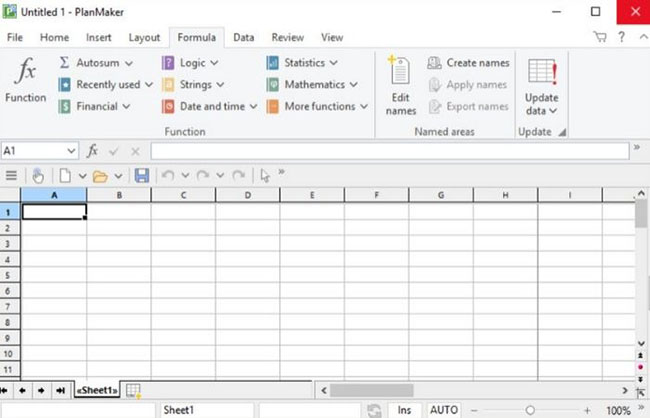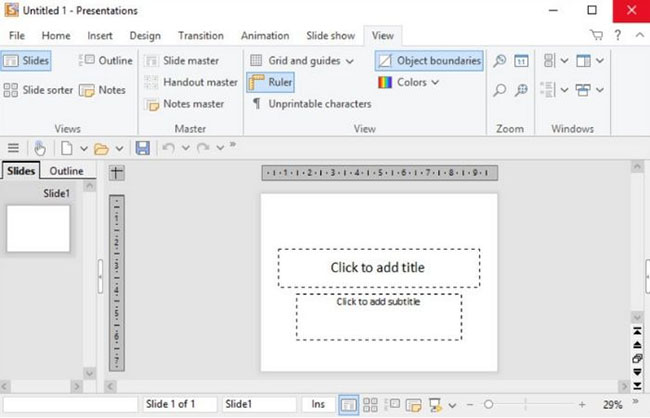How to install Freeoffice in Linux
FreeOffice is a freeware version of SoftMaker Office, considered one of the best alternatives to Microsoft Office on Linux. With 3 different office applications, FreeOffice provides a powerful alternative to Word, Excel and PowerPoint, running on most Linux machines.
Today's article will introduce how to install FreeOffice in Linux as well as an overview of its features and drawbacks.
Install FreeOffice
To get started, visit the official FreeOffice website and navigate to the download page. There, you can choose the version that best fits your system. The Linux version of the FreeOffice software package is available in three different file formats: DEB, RPM and TGZ.
For a Debian based distribution
If your machine is running Debian, Ubuntu, Linux Mint or any other Debian-based distribution, you will need to download the DEB package. After downloading, you can double click on it to open the installer. Alternatively, if your distro doesn't support the graphical installer, you can install gdebi or just run the command in the terminal:
sudo dpkg -i softmaker-freeoffice-2018_971-01_amd64.deb Fedora / OpenSuse
If you are running Fedora, openSUSE or any other distribution using RPM packages, you will need to download the RPM version of the package. Install it with the command:
sudo rpm softmaker-freeoffice-2018-971.x86_64.rpm Other distributions
If you are not running a distribution that can install RPM or DEB files, then you will need to use the tarball package . Download the TGZ package, then extract it as shown below.
tar -zxvf softmaker-freeoffice-971-amd64.tgz Navigate to the extracted folder and run the installation script.
cd softmaker-freeoffice-971-amd64 sudo ./installfreeoffice FreeOffice reviews and features
FreeOffice comes with versions of three classic office applications:
- TextMaker - word processor
- PlanMaker - spreadsheet
- Presentations - slideshow presentation
At startup, you'll need to choose between two sets of interfaces: Ribbon for people familiar with Microsoft Office and a classic option for those who prefer the old word processor. You can then launch any of these 3 applications.

The first of these, TextMaker, is a fairly powerful word processing software. It's not an official option like Microsoft Office, and advanced users might be disappointed by the tool's limited feature set. However, TextMaker can meet about 100% of the needs of ordinary users.

PlanMaker is a spreadsheet application that functions similar to Microsoft Excel and many other open spreadsheet software. If you work with programs like Excel or OpenOffice Calc, you will feel very familiar.

The same is true of Presentations, the slideshow application. It's not as appealing as PowerPoint, maybe even a bit outdated, even with open source slideshow standards - but still get the job done.
In general, FreeOffice will seem a bit inferior to Microsoft Office and other big name open source word processors, like OpenOffice and LibreOffice. And there are a few limitations to the software you'll need to keep in mind. For example, although you can open .docx and .pptx files, you cannot save them.
But with such a small memory footprint and fast loading times, FreeOffice is a great option for word processing and common spreadsheet design.
The download you make can help others. Most recently, during the Christmas season of 2018, SoftMaker launched a charity campaign, in which the company donated € 0.10 for each download to perform charitable projects around the world. .
FreeOffice for Linux
FreeOffice is a simple alternative to Microsoft Office and other open source office software. FreeOffice will work with most Linux versions and its software packages are available in a variety of formats, making it easy to install on Debian, Ubuntu, Fedora and other Linux distributions.
Hope you are succesful.
You should read it
- 5 reasons to install Linux on old computers
- How to install Kali Linux on macOS
- Steps to install Webex for Linux
- How to install NVIDIA drivers on Kali Linux
- How to install Kali Linux on Android using Linux Deploy
- How to install Windows Game on Linux with Winepak
- Instructions for installing basic Arch Linux
- How to install Kali Linux on your computer
May be interested
- How to install Spotify on Linux
 spotify has actually supported linux for a long time. although most distributions do not include this application in the repository for license reasons, it is not really difficult to install this official player on a linux pc.
spotify has actually supported linux for a long time. although most distributions do not include this application in the repository for license reasons, it is not really difficult to install this official player on a linux pc. - How to Install VirtualBox on Linux
 setting up a virtual machine can be a great way to test alternative software or operating systems on a computer without altering or putting the existing system at risk.
setting up a virtual machine can be a great way to test alternative software or operating systems on a computer without altering or putting the existing system at risk. - How to install Deepin Linux
 deepin linux is an excellent distribution. so why not experience it on your computer? deepin has a variety of high-quality layouts / interfaces and great software.
deepin linux is an excellent distribution. so why not experience it on your computer? deepin has a variety of high-quality layouts / interfaces and great software. - How to Install Asahi Linux on an Apple Silicon Mac
 asahi linux is a project to port the linux kernel and related software to macs powered by apple silicon. it is still under development, but it has made significant progress in a short period of time.
asahi linux is a project to port the linux kernel and related software to macs powered by apple silicon. it is still under development, but it has made significant progress in a short period of time. - How to install and use TeamViewer on Linux
 teamviewer is a powerful tool that allows teams to collaborate and share their screens in real time. it is also extremely useful in remote technology support.
teamviewer is a powerful tool that allows teams to collaborate and share their screens in real time. it is also extremely useful in remote technology support. - How to Install Linux
 linux is the foundation of thousands of open source operating systems designed to replace windows and mac os. linux allows users to download and install it for free on any computer. because this is an open source platform, the number of available versions or distributions is very diverse and is developed by many different organizations. follow the basic instructions below to install all linux versions, especially some of the most popular distributions.
linux is the foundation of thousands of open source operating systems designed to replace windows and mac os. linux allows users to download and install it for free on any computer. because this is an open source platform, the number of available versions or distributions is very diverse and is developed by many different organizations. follow the basic instructions below to install all linux versions, especially some of the most popular distributions. - Should I install Arch Linux?
 arch linux is one of the most popular linux operating systems. arch linux is even easier to install than arch-based distributions like manjaro and antergos.
arch linux is one of the most popular linux operating systems. arch linux is even easier to install than arch-based distributions like manjaro and antergos. - How to install Handbrake on Linux
 handbrake is a powerful open source tool for encoding and editing videos. it includes a graphical control panel to manage encryption and even preview the results.
handbrake is a powerful open source tool for encoding and editing videos. it includes a graphical control panel to manage encryption and even preview the results. - How to install and remove fonts on Linux
 the linux system has many integrated fonts but you still can't find the font you need. downloading and installing new fonts is very easy on linux and we will show you how to do this in the following article.
the linux system has many integrated fonts but you still can't find the font you need. downloading and installing new fonts is very easy on linux and we will show you how to do this in the following article. - How is Arch Linux different from other Linux versions?
 arch linux is arguably the most misunderstood linux distribution. many people find arch difficult to install and maintain.
arch linux is arguably the most misunderstood linux distribution. many people find arch difficult to install and maintain.









 Basic guide to Nano editor
Basic guide to Nano editor How to install and use a vulnerability scanner in Linux
How to install and use a vulnerability scanner in Linux 11 df commands in Linux (with example)
11 df commands in Linux (with example) Minimum hardware requirements for installing FreeBSD
Minimum hardware requirements for installing FreeBSD How to add simple launcher dashboard on LXDE
How to add simple launcher dashboard on LXDE How to perform graphical stress test on Linux
How to perform graphical stress test on Linux